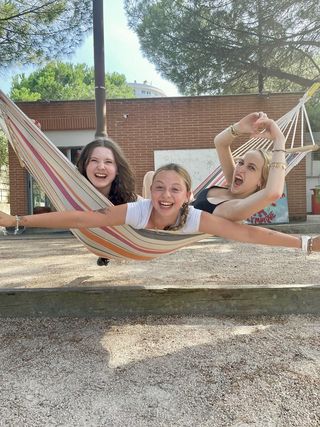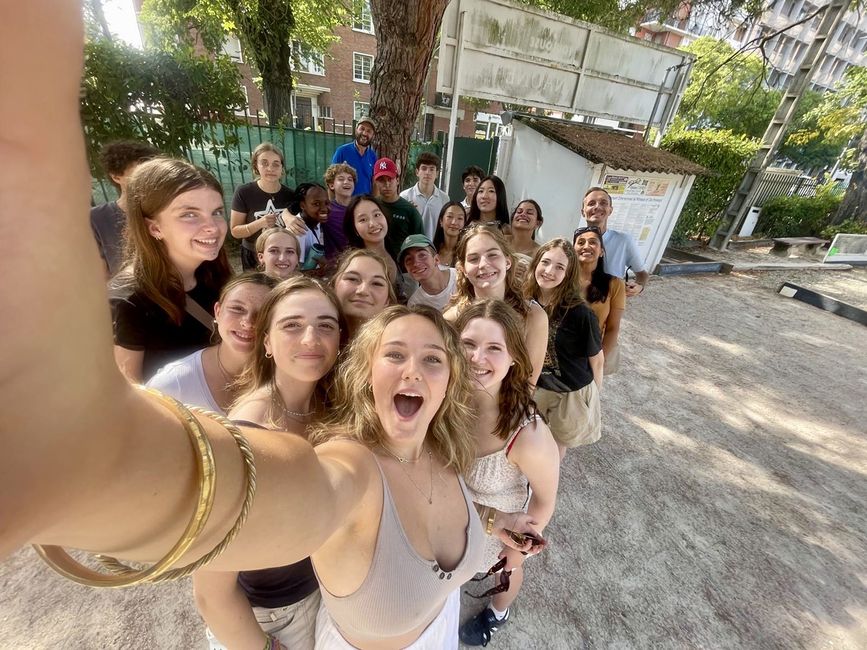High School Semester Programs Begin! HSA Welcomes Fall 2024 Students
Passport to Adventure!
They are off! Right now, our Fall 2024 adventurers are starting to settle into their international destinations, bubbling with excitement for this life-changing adventure. Curious about the early days of being a CIEE HSA student? Let’s dive into Hazel McDiarmid's experience while living abroad in France!
Introducing Ambassador Hazel McDiarmid
Though I’m only two months into my time abroad, I’ve already settled into a routine and noticed some small differences between France and the US! It’s been fun to talk about these differences with my friends and family here and in the States, and now I’m excited to share them with you. Let’s get into it!
School Life
In France, school takes up a lot more time than in the US! It usually starts at 8am and ends around 6pm, meaning it’s not unusual for me to spend 12 hours a day commuting and at school. However, it doesn’t mean I’m in classes all day! French high schools have much longer lunch breaks - usually 2-3 hours. We also have small breaks throughout the day and longer study periods a few times per week.
Here, everyone takes mostly the same classes: French, Languages, Science, Math, History. But we also get to pick 3 subjects we want to specialize in! I chose SES (Economics and Sociology), LLCE (English Literature), and Math. Grading is out of 20 and is much more rigid than in the US - anything over 15 is considered very strong!
Meals
In France, eating is super important! It’s a way to spend time with your family and is something to enjoy. Because food is so important here, the quality on average is much higher, and even basic fruits and veggies are full of flavor.
There is a specific meal structure, and people don’t usually eat between meals, except at 4pm for “le gouter,” which is a sweet snack. Breakfast is usually something light and sweet like cereal, toast, or pastries, while lunch is the biggest meal of the day. For lunch, people usually eat several courses: salad/soup, main dish with veggies, bread, cheese, fruit, and maybe a dessert. Dinner is similar to lunch but with smaller portions.
One thing I learned is that there are many rivalries between different regions of France when it comes to food! A particular one: what many people call “pain au chocolat” or a chocolate croissant is considered “une chocolatine” in the South of France. People actually get upset if you say, “pain au chocolat!”
The Environment
In general, people in France tend to be much more environmentally conscious. When I asked about house rules, my host family instructed me to turn off the light when I left a room, reuse any plastic products, and try to do my laundry when the sun was out so the solar panels would be the main energy source. I learned to take significantly shorter showers and to turn off the water while I was washing my hair. I know that my host family is not necessarily representative of everyone, but the average French person knows and cares more about their environmental impact.
Manners
In France, the standard for politeness is much higher than in the US. It's always necessary to say hello and goodbye to shopkeepers, bus drivers, teachers, etc. Instead of handshakes or hugs, lots of people in France greet each other with “la bise,” or by kissing each other on the cheeks. Be careful, though: depending on the location, it might be two, three, or even four kisses, and the side you start on depends!
In addition, children are expected to treat adults with much more respect and formality. Whereas in the US the magic word is “please,” French kids learn “hello,” “goodbye,” “please,” and “thank you.” They are also expected to speak to adults using the formal vous (you).
Style
A lot of French people are super stylish! This is clear when you walk through the cities. A lot of people sit outside cafes and restaurants to people-watch, so they pick their outfits in accordance.
Even kids at school pay much more attention to what they wear. While you might wear jeans and a t-shirt to school in the USA, or even pajamas, French high school students often wear dresses, blazers, heels, and button-down shirts. It’s been fun to dress up and experiment with my style here!
Studying Abroad in High School

In general, there are many things that are the same in France and the US, but also many fun differences to discover! I have already learned and experienced so much only part way through my program. I would highly recommend studying abroad with CIEE. There is so much support and there are programs for everyone, no matter your favorite country, language skills, or interests!
If studying abroad in high school sounds like a dream, you can apply here or you can schedule a call with an Enrollment Coordinator to start planning.

